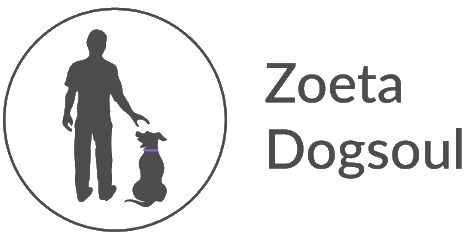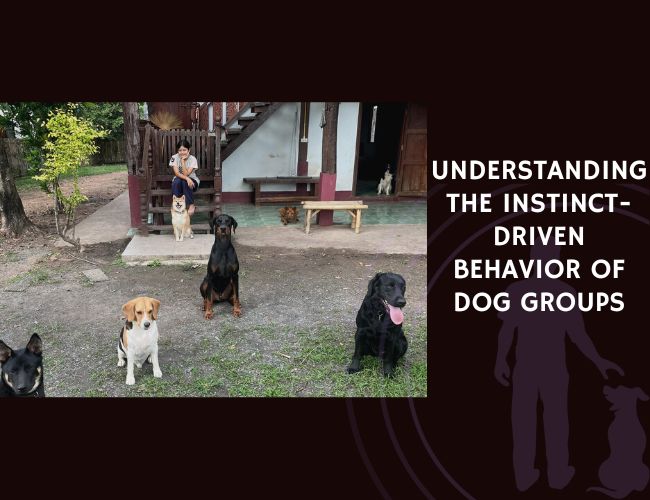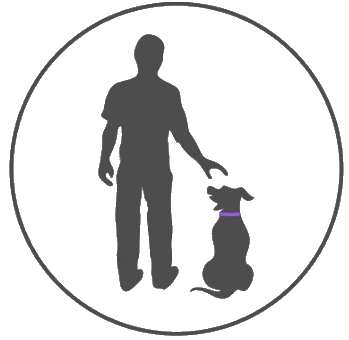Welcome to our exploration into the instinct-driven behavior of dog groups. To truly comprehend our four-legged friends, it’s important to delve deep into their social behaviors and organization patterns, which are fundamentally different from ours yet surprisingly relatable. This blog post aims to unravel the intricate social order prevalent amongst dogs, providing you with insights that can enhance your understanding of your furry companions.
Why should we care about understanding the instinct-driven behavior of dog groups? Well, if you’ve ever owned a dog or spent time around them, you know that dogs are not just simple creatures driven by a need for food and shelter. They have complex social interactions, communicate in nuanced ways, and form distinct hierarchies within their groups. Understanding these instinctive behaviors can help us interact better with our canine companions, meet their needs more effectively, and even predict and manage potential behavioral issues.
In this blog post, we’ll start by looking at the instinct patterns shared between humans and dogs. We’ll explore how humans can consciously initiate these patterns, fostering better interaction and communication with our pets. The focus will then shift to the social order in the dog world, revealing how dogs behave according to their nature and survival instincts as social beings. We’ll delve into their special level of communication and the parameters that define their social order.
Next, we’ll take a closer look at the social life within a dog group. You’ll learn about the importance of communication, the hereditary-coordinated behavior, and the classification of behavioral patterns into interaction, interaction play, and structuring patterns. Following this, we’ll discuss how dog groups organize themselves, balancing sensitivities and needs for survival while also dealing with the competition of interests through prosocial aggression.
As we progress further, we’ll examine how dogs adapt to the complex social conditions of the human world. Despite being instinct-driven creatures, dogs have shown an incredible ability to form close social partnerships with humans based on effective communication. We’ll also address the challenges of innate behavior patterns in human society and underscore the importance of understanding and addressing these patterns for a harmonious co-existence.
By the end of this blog post, we hope to provide you with a comprehensive understanding of the instinct-driven behavior of dog groups and their social order, thus enhancing your relationship with these lovable creatures. So, let’s embark on this exciting journey into the world of dogs!
Instinct Patterns Between Humans and Dogs
As we delve deeper into the amazing world of dog behavior, it becomes apparent that there is a beautiful tapestry of instinct patterns between humans and dogs. Just as we humans have been able to build complex societies based on rules, hierarchies, and social norms, our canine companions also exhibit group-forming, organizing, and cohesive behavior patterns. These patterns can be broken down into interaction, interaction play, and structuring patterns, depending on the functional circle.
What’s intriguing, however, is that these instinct patterns aren’t exclusive to the canine world. They are also prevalent in our interactions with dogs. We might not consciously recognize it, but a simple game of fetch or a stern command to sit represents an initiation of these instinct patterns. By understanding and integrating these patterns into our interactions with dogs, we can strengthen our bond with them and better comprehend their behaviors.
Now, you may be wondering: What exactly are these instinct patterns? Let’s break them down. Interaction patterns involve the initial phase of contact. This includes all behaviors associated with meeting and greeting, such as sniffing, wagging tails, and even barking. These actions help establish initial communication and set the tone for further interactions.
Next up are interaction play patterns. Think about those moments when you see dogs chasing each other around a park or engaging in a playful wrestle. These behaviors go beyond mere fun. They are critical for dogs to understand their social environment and their place within it. Through play, dogs learn about hierarchy, boundaries, and the art of communication. It’s akin to children learning social rules through their playground interactions.
Finally, we have structuring patterns. These are the most complex behaviors and involve establishing and maintaining a certain order within the group. Dogs use a variety of signals and behaviors to establish hierarchies and territories, such as a dominant dog standing tall over a submissive one or using certain areas for specific activities.
In essence, these instinct patterns represent a sophisticated code of conduct that dogs use to navigate their social world. When we consciously initiate and participate in these patterns, we can better understand our furry friends’ needs and emotions, enhancing our relationship with them. As we proceed further into the complexities of dog group behavior, keep in mind these instinct patterns, for they form the foundation of canine communication and social structure.
Social Order of the Dog World
Having previously discussed the instinct patterns between humans and dogs, let us now turn our attention towards the intricate social order that governs the world of canines. Dogs, much like us, are social beings that rely on a set of behavioral guidelines for survival, and these guidelines are largely dictated by their natural instincts.
Dogs behave according to their nature, which is primarily driven by instincts. These instincts allow them to function effectively within their social groups and ensure their survival. Social behavior in dogs is not a choice, but an inherent part of their existence. It’s essential to understand this behavior because it forms the bedrock of their interactions with both their kind and humans.
At the heart of this social behavior lies a special form of communication dogs use to make social agreements. These agreements, whether about territory, food or hierarchy, are pivotal to maintaining harmony within a group. Much like a silent conversation, dogs communicate their emotions and needs to each other and adapt their behavior accordingly. This adaptation and acceptance of the state of mind of others is key to establishing order within the group.
Recognizing and acknowledging this nuanced form of communication among dogs is crucial if we, as humans, want to understand their actions better. It applies not only to dog-to-dog interactions but also significantly impacts how dogs interact with us. By understanding their unique language, we can build stronger bonds with our canine companions, effectively communicate our expectations, and manage their behaviors more efficiently.
There are certain parameters for social order in the canine world which must be acknowledged. Dogs cannot choose whether or not to interact on this particular level. Their survival depends on their ability to read and respond to the myriad signals and cues given by their fellow pack members. Ignoring these cues or failing to respond appropriately can lead to social discord and conflicts within the group.
Understanding these parameters can provide us with invaluable insights into why dogs behave the way they do in different scenarios. It sheds light on their instinctive behaviors, their responses to stimuli, and their interactions with humans and other dogs. Armed with this knowledge, we can foster a more harmonious relationship with our dogs, one that respects their innate behavior and meets their instinctual needs.
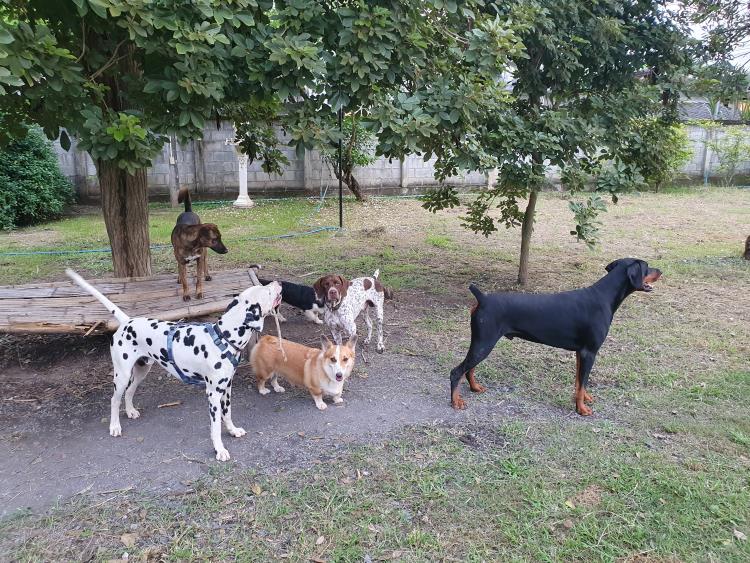
Social Life in the Group
As we continue our exploration of canine social behavior, let’s delve into the importance of communication within a dog group. As you may have guessed, communication is not only about exchanging barks and growls. It’s a complex interplay of signals that shape the very fabric of a group’s social life. Just like humans, dogs rely heavily on communication to make their needs understood, to form relationships, and to establish their place within the societal hierarchy.
Dogs are remarkably adept at using a range of behavioral signals to communicate. Fascinatingly, these behaviors are not learned or acquired over time but are hereditary-coordinated. This means they are hard-wired into the dog’s DNA and remain constant across generations and breeds. For instance, a puppy instinctively knows how to signal submission to an older, more dominant dog. It doesn’t need to be taught – it’s part of its genetic blueprint.
These hereditary behaviors do not function as standalone signals but are part of broader behavioral patterns that govern a dog’s interaction within the group. To understand this better, think of these behaviors as words and the patterns they form as sentences. These ‘sentences’ of behavior help dogs navigate the complexity of their social lives. They provide a framework for how dogs interact with each other, engage in playful activities, and structure their community.
The behavioral patterns exhibited by dogs can be broadly divided into three categories: interaction, interaction play, and structuring patterns. Interaction patterns involve regular exchanges between dogs, such as greeting rituals or dominance displays. Interaction play patterns, on the other hand, encompass the array of behaviors seen during play, which is crucial for establishing bonds and learning social rules. Lastly, structuring patterns refer to behaviors that define the hierarchical order within the group.
By understanding these patterns, we can better comprehend our canine companions and their intricate social world. It also provides a foundation for recognizing when something is amiss in their behavior, signaling potential health or emotional issues. So the next time you observe your dog interacting with its peers, pay attention to its behavioral cues. You might just discover a new layer of understanding about your furry friend.
How Dog Groups Organize Themselves
Understanding the organization of dog groups requires us to delve into the principles that govern social life in canine communities. Dogs, like humans, have intricate social orders and relationships within their groups. The key to understanding this organization lies in recognizing and interpreting their instinctive behaviors.
The Principles of Social Life
Within a dog group, certain principles govern their interactions and social order. Although these principles may seem foreign to us humans, they are deeply ingrained in the canine world. Dogs live by constantly exploring their sensitivities and needs, always seeking balance for survival. This continuous process of adjustment and exploration ensures harmony within the group. Dogs, being instinct-driven creatures, rely heavily on these predetermined patterns of behavior rather than conscious decision-making. Therefore, the hierarchy within a dog group is not a result of random choices, but rather an outcome of embedded instincts that each dog possesses.
Survival through Sensitivity and Balance
Much like humans, dogs have unique personalities and sensitivities which guide their behavior. In a group setting, dogs must constantly navigate their sensitivities and needs to ensure their survival. By understanding and respecting the boundaries of others, they maintain the delicate balance of power and social order within their group. This balancing act is essential for survival; it mitigates conflicts and fosters cohesion within the group. Each member of the group plays a role in maintaining this balance. From the dominant alpha to the submissive omega, every dog contributes to the overall harmony of their pack.
Prosocial Aggression and Competition of Interests
The term ‘prosocial aggression’ might sound contradictory – after all, how can aggression be prosocial? In the canine world, however, prosocial aggression serves as a pivotal psychosocial regulator. It operates based on a “threat” behavior pattern and corresponding reactions within the group. For example, one dog may claim a territory, a resting place, or prey, while another dog might desire the same. This competition of interests is usually communicated and clarified by displaying threatening or imposing behaviors and reacting accordingly. Dogs aim to cause as little harm as possible during these interactions. This form of aggression is not directed towards causing harm or creating chaos but is rather a method of communication – a way for dogs to express their needs and establish their status within the group. Understanding the principles of social life, the balancing of sensitivities and needs, and the role of prosocial aggression in dog groups provides us with valuable insights into their behavior. By recognizing these instinct-driven behaviors, we can better comprehend and appreciate the complex social order within dog groups.
The Dog in the Human World
Diving into the intricacies of a dog’s world, we’ve traversed through their instinct-driven behaviors and their complex social orders. Now, let’s shift our focus to understand how these creatures adapt to the human world.
Imagine being plucked from an environment governed by well-defined instincts and natural laws, and then suddenly having to navigate the maze of human society. This is the reality for dogs living amongst us. They must learn to cope with our complex social conditions, often vastly different from their natural habitats.
Despite these challenges, dogs have proven to be exceptionally adaptable. They form close social partnerships with humans, building bonds that are deep and enduring. But how exactly do they achieve this?
Communication: The Key to Partnership
The answer lies in communication. Dogs are adept at grasping the meaning of human signals, from subtle body language to vocal cues. Through observation and interaction, they learn to respond in ways that we find meaningful. This ability to understand and react to our signals forms the basis of our relationship with them. It’s a remarkable feat considering these interactions are not part of their instinctual repertoire.
However, it’s important to remember that while dogs can learn new behaviors through communication, they remain largely instinct-driven creatures. Their actions are primarily guided by innate patterns rather than reason. Despite their capacity to adapt, we shouldn’t expect them to completely understand or conform to human norms.
Understanding Instinct-Driven Behavior
Recognizing the instinct-driven nature of dogs can help us foster a more harmonious relationship with them. Instead of attempting to suppress their innate behaviors, we strive to understand them. This understanding can guide us in creating a living environment that respects their natural instincts while ensuring their behaviors are compatible with human society.
As we navigate the world of dogs, it becomes clear that our furry companions are far more complex than they seem. They are instinct-driven creatures trying to adapt to our human world, forming close social partnerships based on communication. By appreciating their instinctual behaviors and learning to communicate effectively, we can enhance our bond with these incredible animals.
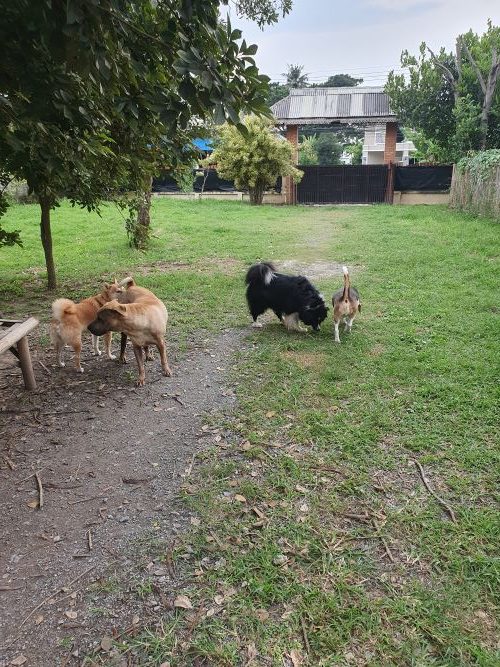
Unemployed Specialists – Innate Behavior Patterns
As we navigate through the world of dogs and their instinct-driven behavior, it is important to note that not all innate behaviors are welcomed in human society. Dogs, being specialists in certain areas like guarding, hunting, or herding, tend to behave according to these breed-specific instincts. Developed and nurtured over many generations, these behaviors come as second nature to our canine companions. However, the human world presents a unique set of challenges for these “unemployed specialists”.
These innate behavioral patterns are often activated by certain stimuli and carried out without thought, purely driven by the dog’s internal mood. This limited freedom of action means that dogs respond naturally to such stimuli, with no alternatives available to them. However, within the confinements of human society, these behaviors are only tolerated or desired under very specific conditions. This situational acceptance can create confusion for our furry friends, making it harder for them to discern when it is appropriate to engage in their instinctual behaviors.
One key challenge lies in the fact that undesirable behaviors, while perfectly natural for the dog, may not be suitable in the context of human society. For instance, a dog’s instinct to chase could lead to potential risks in urban environments. Similarly, protective behaviors that are appreciated in certain situations might be viewed as aggression in others. Hence, the need arises for humans to effectively communicate which behaviors are acceptable and when.
Addressing these ingrained behavioral patterns requires understanding, patience, and clear communication from the human counterpart. Explicitly communicating the cessation of an undesirable behavior is essential. Simply redirecting the dog or ignoring it does not clearly convey the message that its behavior is undesirable. Prevention is recommended as a way to avoid punitive actions that can be unpleasant for both the dog and the human.
The importance of understanding and addressing these patterns cannot be overstated. Remember, what a dog doesn’t learn from the start, it doesn’t need to be forbidden from later. Or in other words, setting clear behavioral boundaries from the beginning can save a lot of effort in breaking unwanted habits later on.
In sum, while dogs are instinct-driven creatures, they are also capable of learning new behaviors through effective communication. Recognizing and addressing their innate behavior patterns is crucial in ensuring a harmonious coexistence between humans and dogs.
Conclusion
As we draw this enlightening exploration to a close, it’s important to revisit the key insights gleaned from this deep dive into the instinct-driven behavior of dog groups. From understanding the unique instinct patterns between humans and dogs, to unraveling the complex social order that governs the canine world, we’ve traversed a path that’s enriched our perspective on these amazing creatures.
We started by recognizing the shared instinct patterns between humans and dogs, highlighting the ability for humans to consciously initiate these patterns. This understanding laid the foundation for our exploration of interaction, interaction play, and structuring patterns—essential elements of communication within the canine world.
We then delved into the intricate social order of the dog world, acknowledging how dogs behave according to their nature for survival as social beings. They communicate at a special level to make social agreements—an essential part of maintaining harmony within their community. Recognizing and respecting these emotions and needs form the parameters for social order in the canine world.
The subsequent discussions revolved around the principles and organization of social life in a dog group, with emphasis on the importance of prosocial aggression and competition of interests in balancing sensitivities and needs for survival. We also addressed the challenges and undesirability of certain innate behavior patterns in the context of human society, stressing the critical need for understanding and addressing these patterns.
The significance of understanding dog group behavior cannot be overstated. Dogs are not just pets; they are social beings with a complex and intricate set of behaviors driven by instincts. Their interactions with each other and with humans have a profound depth that often goes unrecognized. By taking the time to understand these behaviors, we can foster a more harmonious and fulfilling relationship with our canine companions.
In light of these insights, I encourage you to apply this knowledge to your interactions with dogs. Recognize their instinctual behaviors, respect their social agreements, and navigate the unique challenges posed by their innate behavior patterns. Remember, they’re not just our pets – they’re instinct-driven beings living in a reason-driven world.
So, the next time you watch a group of dogs interact, consider the complex social dynamics at play. And when you interact with your dog, remember that he or she is interpreting your signals through the lens of instinct. With understanding comes empathy, and with empathy comes a deeper bond. So let’s strive to understand these wonderful creatures better, for their sake and ours.
